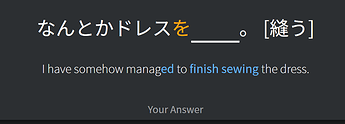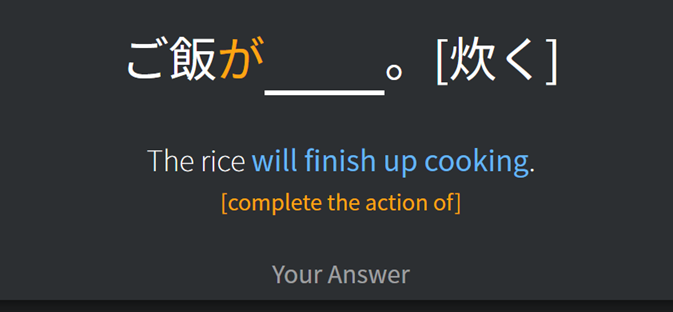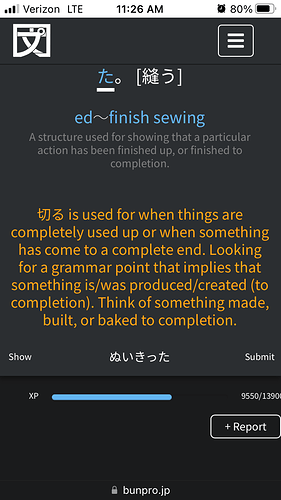I like the new, more consistent nuance hints, but it seems that some of these are excessively wordy. For example, this one shows up on my phone as a wall of text, almost completely pushing out the original question. Maybe the hint could focus on the key words for the grammar point, for the purpose of triggering the memory of a particular grammar point, instead of creating a detailed teaching lesson on one screen.
In this case, I think you only need the following (I highlighted the key trigger words for each grammar point, but I’m not suggesting making it bold like that):
-
切る implies things are completely used up or something has come to a complete end. Think of a grammar point that implies that something is produced, built, or baked to completion.
( → “oh! あげる”)
p.s. For this one, the extra punctuation, like “/” and “()”, probably also makes it visually look more complicated. It’s just a hint, right? It doesn’t have to cover every possible nuance. A simpler sentence is a better trigger to a memory.









